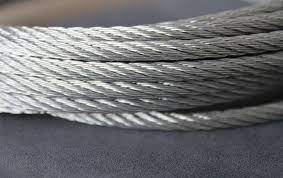Stainless steel wire, an integral material in a wide array of pvc coated stainless wire rope industries, is celebrated for its unique combination of strength, flexibility, and corrosion resistance. This alloy wire, composed mainly of iron, chromium, and nickel, stands out not only for its robustness but also for its versatility, making it an indispensable resource in sectors ranging from healthcare to aerospace.
Composition and Types
Stainless steel wire is primarily made from a combination of iron and chromium, with the latter constituting at least 10.5% of the alloy. The inclusion of chromium provides stainless steel with its signature resistance to rust and staining. Other elements such as nickel, molybdenum, and nitrogen are often added to enhance specific properties. The various grades of stainless steel wire—like 304, 316, and 430—each offer distinct characteristics suited to different applications:
- 304 Stainless Steel: Known for its excellent corrosion resistance and formability, 304 is the most commonly used grade.
- 316 Stainless Steel: Contains molybdenum, providing superior resistance to chlorides and other industrial solvents.
- 430 Stainless Steel: Often used in decorative applications, it offers good corrosion resistance and formability at a lower cost.
Manufacturing Process
The production of stainless steel wire involves several steps:
- Melting and Casting: The raw materials are melted in an electric furnace, and the molten steel is cast into billets.
- Hot Rolling: The billets are heated and rolled into a rough wire shape.
- Cold Drawing: The wire is drawn through a series of dies to reduce its diameter and achieve the desired thickness and tensile strength.
- Annealing: The wire is heat-treated to relieve internal stresses and improve ductility.
- Surface Finishing: Depending on the application, the wire may undergo additional surface treatments to enhance its appearance or performance.
Applications
The unique properties of stainless steel wire make it suitable for a multitude of applications:
- Medical Devices: Stainless steel wire is used in surgical instruments, orthodontic braces, and stents due to its biocompatibility and resistance to sterilization processes.
- Aerospace: In the aerospace industry, stainless wire is used in the manufacture of springs, fasteners, and aircraft control cables, benefiting from its high tensile strength and corrosion resistance.
- Construction: Stainless wire is employed in reinforcing structures, architectural cables, and wire mesh, providing both aesthetic appeal and durability.
- Automotive: Used in exhaust systems, sensors, and safety mechanisms, stainless wire withstands high temperatures and corrosive environments.
Advantages
Stainless steel wire offers several advantages:
- Corrosion Resistance: The chromium content forms a passive layer of chromium oxide, protecting the wire from rust and oxidation.
- Strength and Durability: It maintains high tensile strength, making it suitable for demanding applications.
- Hygienic Properties: The smooth, non-porous surface is easy to clean and sterilize, crucial for medical and food industry applications.
- Aesthetic Appeal: The lustrous finish of stainless wire makes it a popular choice for decorative and architectural purposes.
Environmental Impact
Stainless steel wire is environmentally friendly, being 100% recyclable. The production process has also seen improvements in energy efficiency and waste reduction, further reducing its environmental footprint. Recycling stainless steel not only conserves raw materials but also requires significantly less energy compared to producing new stainless steel from virgin ore.
Conclusion
Stainless steel wire is a testament to modern metallurgy’s capabilities, blending strength, versatility, and durability. Its applications span critical sectors, proving indispensable in modern society. As technology advances, the demand for high-performance materials like stainless steel wire will only grow, driving innovation and development in numerous fields.


